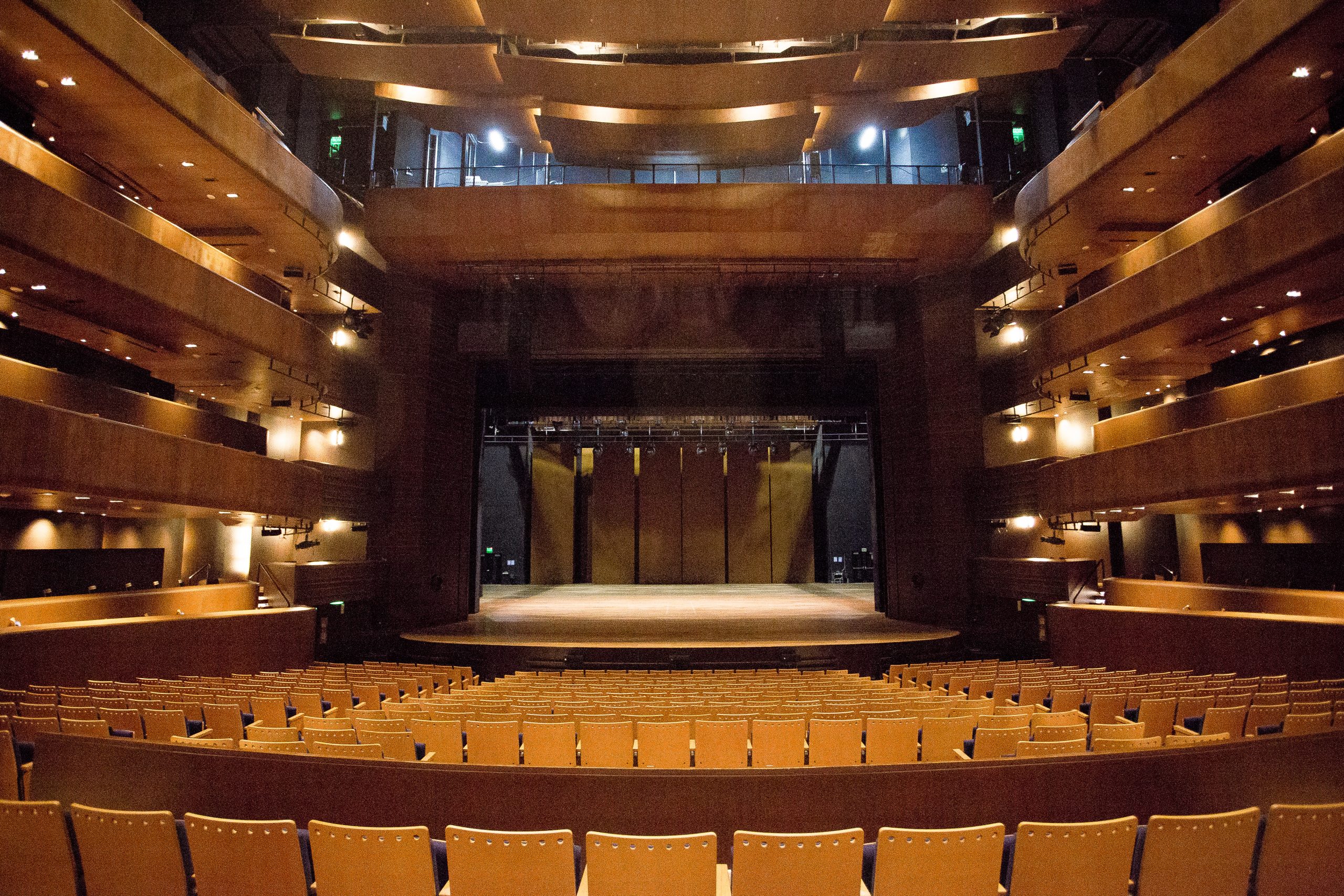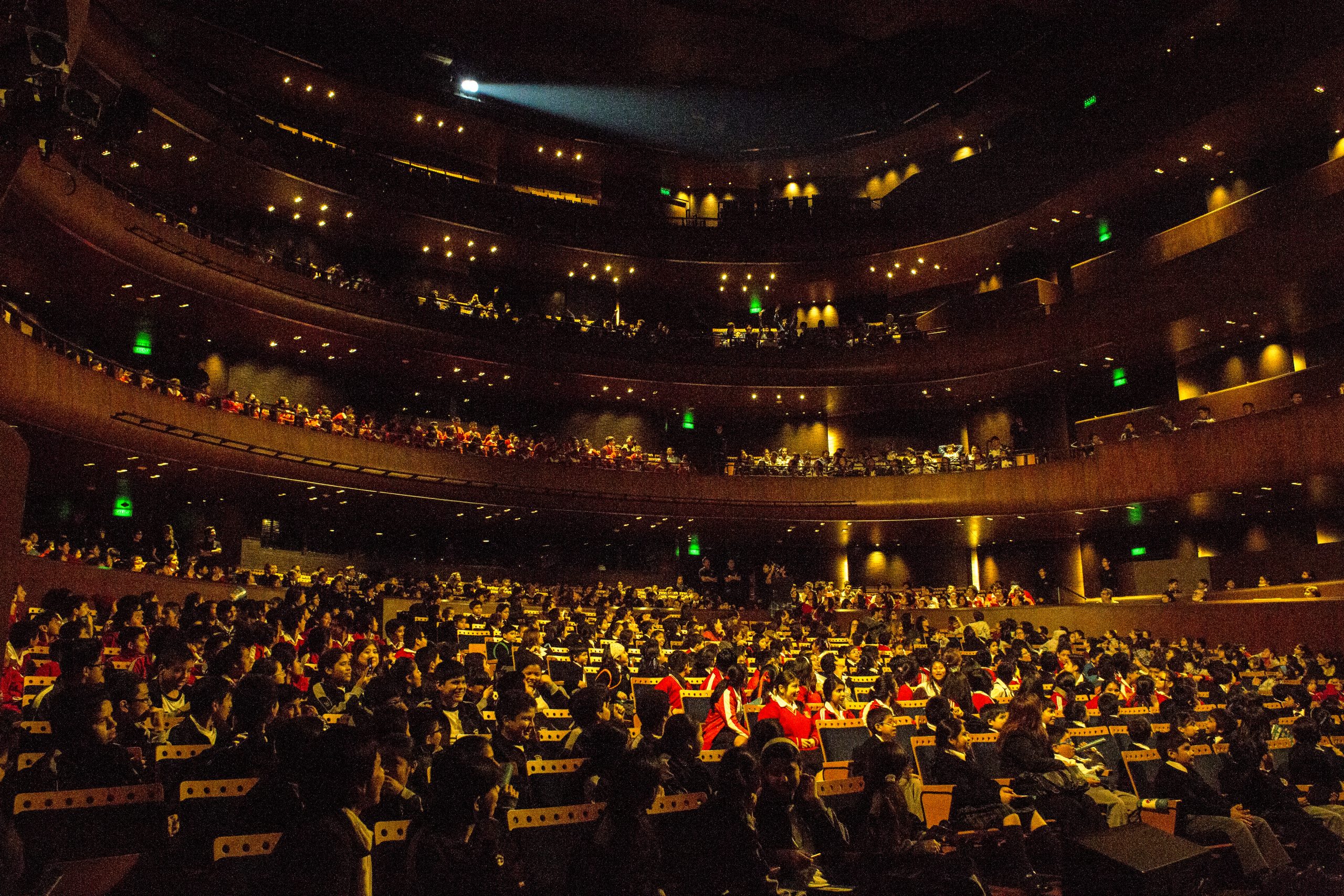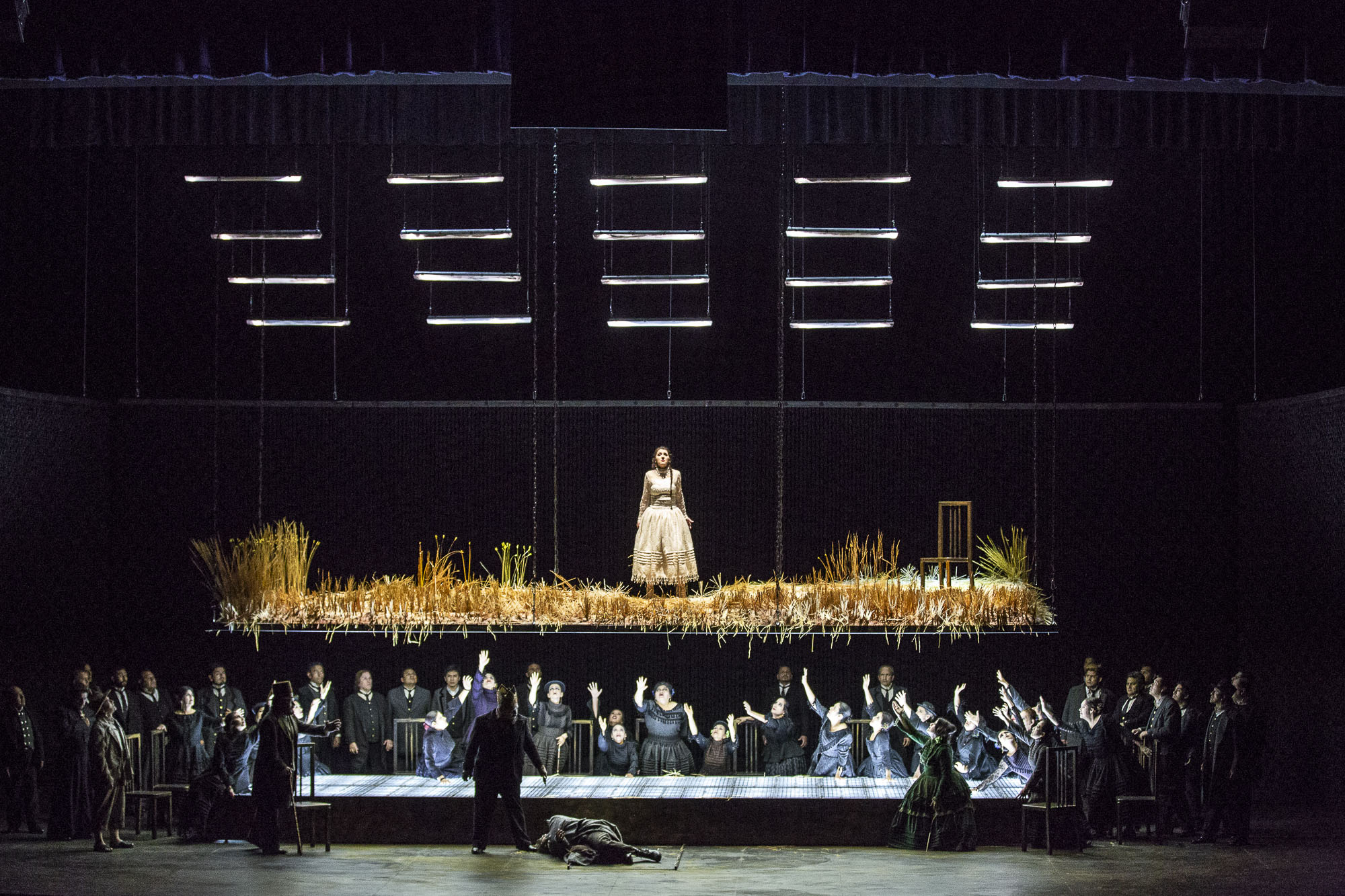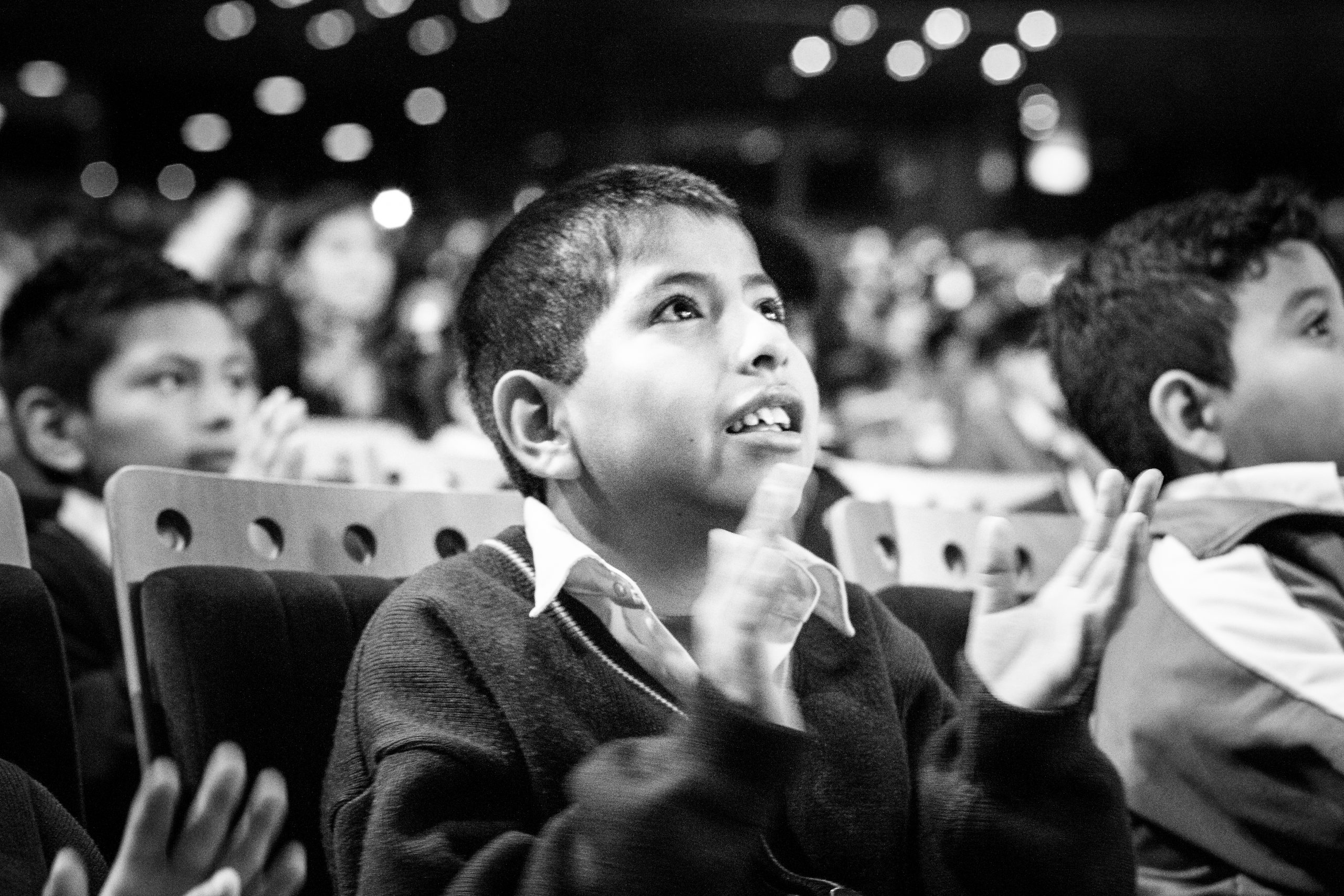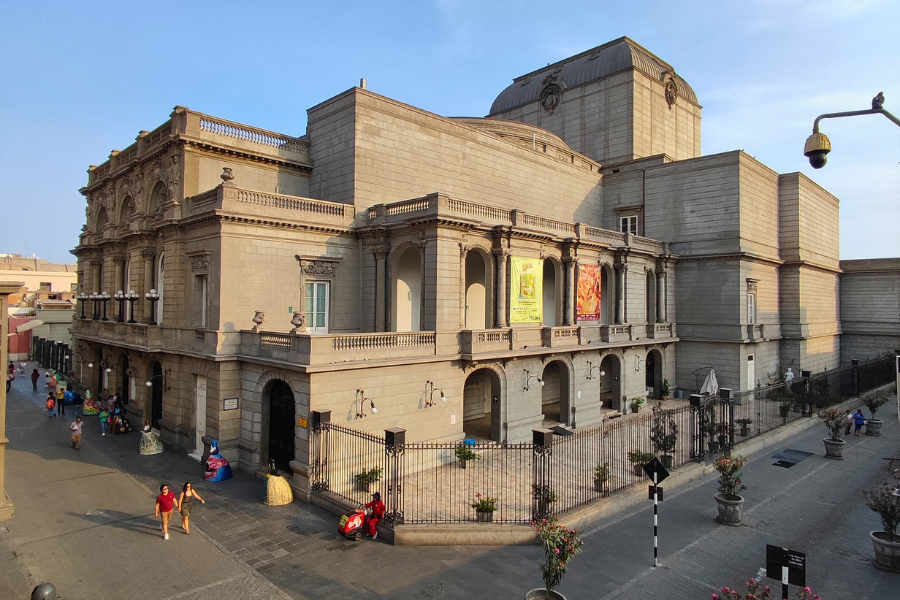Gran Teatro Nacional, una moderna casa para las artes y las culturas en Perú
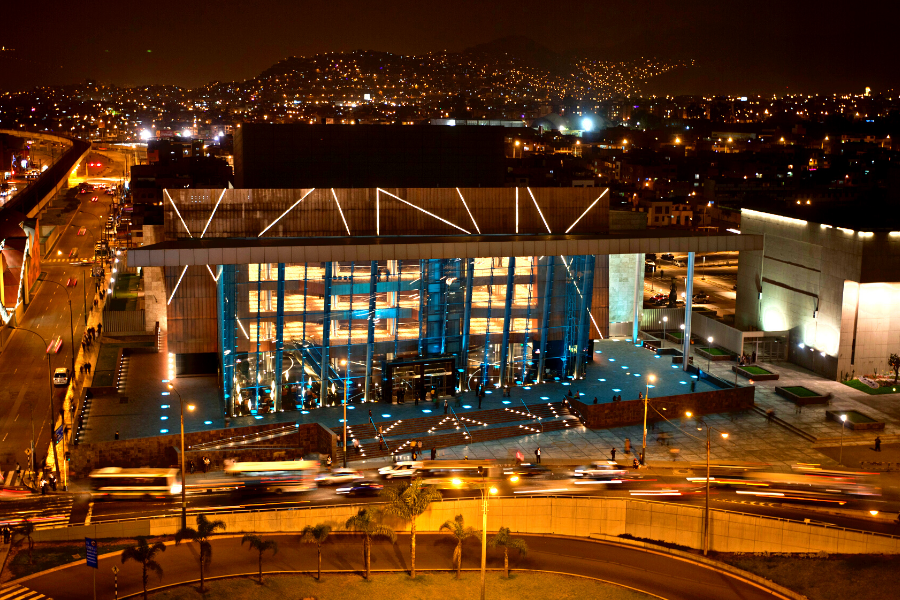
El Gran Teatro Nacional de Perú se inauguró una noche de julio de 2011 con una ceremonia en la que se presentaron la Orquesta Sinfónica Nacional del Perú, la soprano canadiense Erin Wall y el bajo-barítono italiano Ruggero Raimondi. En 2012, abrió sus puertas al público por primera vez con una ópera-ballet creada especialmente para este fin, compuesta por el peruano Nilo Velarde, y un concierto del tenor español Plácido Domingo. Este teatro, el más grande de Perú, ubicado en el distrito limeño de San Borja, es una apuesta del país por el arte, con el foco puesto en ser una vitrina internacional para el talento peruano y para montar grandes producciones de nivel mundial. No obstante, su finalidad principal es fomentar la implicación y participación de los ciudadanos y ciudadanas del Perú en las artes escénicas.
La noche del 22 de julio de 2011 se cumplió un anhelo para el mundo artístico y cultural de Perú. Luego de dos años de construcción, se inauguraba el Gran Teatro Nacional (GTN), el escenario artístico más grande y moderno del país. “Esta es una noche singular de alegría, al entregarle al país esta obra maravillosa con la cual nuestra patria entra por la puerta grande del arte dramático, lírico y de la danza del mundo”, comentó el entonces presidente de Perú, Alan García.
La ceremonia de inauguración fue un adelanto de la misión que prometió cumplir el Gran Teatro Nacional. El concierto comenzó con la presentación del arpista ayacuchano Otoniel Ccayanchira, quien interpretó la pieza Valicha, junto a la Orquesta Sinfónica Nacional, bajo la dirección de Miguel Harth-Bedoya.
Sin embargo, no solo el talento nacional iba a ser visibilizado; esa misma noche, subieron al escenario, como invitados internacionales, la soprano canadiense Erin Wall (1975 – 2020), asociada a la ópera de Metropolitan, La Scala y la Ópera de París, y el mítico bajo-barítono italiano Ruggero Raimondi (1941), estrella de los escenarios y las pantallas del cine y la televisión alrededor del mundo. El Gran Teatro Nacional comenzaba su historia y sus aspiraciones en grande.
Modernidad y vanguardia
El distrito de San Borja se ubica hacia el este de la capital peruana, Lima. Entre sus calles, se refleja parte de la historia del país; la vida urbana, residencial y cultural es animada por lugares como la Torre del Banco de la Nación, el Centro de Convenciones de Lima y los complejos arqueológicos de Huaca San Borja y Limatambo, que contrastan con la oferta de departamentos y viviendas caracterizadas por su vanguardia arquitectónica.
Fue este municipio el elegido para construir el Centro Cultural de la Nación, el cual alberga la Biblioteca Nacional del Perú, el Museo de la Nación, el Ministerio de Cultura, el Ministerio de Educación y, como emblema, el Gran Teatro Nacional del Perú.
La idea inicial para la construcción del Gran Teatro Nacional se remonta a la primera década de los 2000, cuando se planteó la necesidad que tenía el país de contar con un escenario moderno, amplio y con capacidad de albergar producciones artísticas locales e internacionales.
El desarrollo urbano de San Borja –y de otros municipios limeños como La Victoria– responde, también, a un eje de innovación que Lima se ha empeñado en promover. En 2010, el arquitecto Augusto Ortiz de Zevallos comentó, con respecto al progreso de la arquitectura de vanguardia en diferentes espacios de la capital, que «ahora se está inventando otra cosa, como ocurre con todas las grandes metrópolis, con una población joven que recrea su ciudad».
En 2007 se conformó el Patronato del Teatro Nacional, el cual, según la organización del teatro es “un grupo de benefactores privados que buscaban promover la creación de un recinto moderno y con mayor nivel tecnológico para las artes escénicas del país”.
Definir la construcción significó licitar por concurso público a empresas arquitectónicas. La empresa del arquitecto peruano Alfonso de la Piedra estuvo a cargo de la estructura general, mientras que el diseño acústico fue realizado por José Nepomuceno, experto brasileño y autor del diseño acústico de salas como la Sala São Paulo, el Auditório Ibirapuera y el Theatro Municipal de São Paulo.
Entre 2010 y 2011 se llevaron a cabo las obras principales del teatro, el cual ocupa un espacio de 15.000 metros cuadrados en la esquina de las amplias avenidas Javier Prado Este y Aviación. El Gran Teatro Nacional se construyó tomando en cuenta una arquitectura futurista, original y que fuera capaz de mostrar la innovación del Perú del siglo XXI. El edificio puede acoger a 1.500 personas, un escenario totalmente equipado, salas de apoyo y ensayos y diferentes ambientes artísticos especiales.
De acuerdo con Nepomuceno, “la acústica orientó el diseño, desde la forma de la habitación hasta su volumen, desde la materialidad hasta la selección de asientos. Los consultores acústicos asumieron un plan de herradura modificado para mejorar la intimidad y los niveles de tres niveles. La sala tiene dos cámaras de reverberación y varias pancartas acústicas para proporcionar variabilidad en la respuesta acústica de la sala”.
Entre lo autóctono y lo internacional
Luego de la inauguración, el 12 de julio de 2012 se realizó la ansiada apertura al público. La primera temporada del Gran Teatro Nacional fue en grande: comenzó con Akas Käs, La promesa del guerrero, una ópera-ballet creada especialmente para iniciar a lo grande, a cargo del compositor peruano Nilo Velarde y la coreógrafa Celeste Viale. La obra es un rescate a la historia autóctona del país: ambientada en el periodo de la cultura Moche –originaria del norte de Perú– cuenta la historia de amor entre una joven mujer y un guerrero. Para la producción participaron 250 artistas peruanos y extranjeros, integrantes de cinco de los seis elencos del Ministerio de Cultura del Perú: la Orquesta Sinfónica Nacional, Ballet Nacional, Coro Nacional, Elenco Nacional de Folclore y Coro Nacional de Niños.
“Ya que Akas Käs abría la primera temporada del GTN, mi idea fue que la obra fuera inclusiva, de tal manera que el espectador pudiese disfrutar de la actuación, de la danza y de la música tal como si estuviera viendo una película, sin necesidad de tener una preparación previa”, explicó Nilo Velarde en un video de 2020, en el que invitaba a ver la transmisión de la obra en la plataforma digital “Gran Teatro Nacional en Vivo”.
En el marco de la segunda edición del Festival Viva México 2012 –una colaboración artística entre Perú y México–, el tenor español Plácido Domingo brindó un recital para la inauguración de teatro, con un repertorio que incluyó piezas clásicas, zarzuela, algunos temas de Broadway, opereta vienesa, además de música mexicana y temas peruanos.
“Me siento muy honrado de ser parte de Viva México 2012. Tengo mucha ilusión de estar nuevamente en este país en un festival tan especial de dos países que tienen un folclore y música extraordinarios. Lo inca y lo azteca son dos grandes fuerzas. Esta es una visita muy corta pero más vale eso que nada”, señaló Domingo en una conferencia de prensa para la ocasión.
La casa de las artes y las culturas del Perú
Actualmente, el Gran Teatro Nacional es considerado como un escenario multipropósito. Es la sede principal de los Elencos Nacionales del Ministerio de Cultura del Perú: Orquesta Sinfónica Nacional del Perú, Ballet Nacional, Coro Nacional, Coro Nacional de Niños, Ballet Folclórico Nacional y Orquesta Sinfónica Nacional Juvenil Bicentenario.
En cuanto a las temporadas líricas, el teatro ha presentado producciones de óperas de repertorio e incluso exploraciones hacia las producciones infantiles. Títulos como Alzira –la famosa ópera de Verdi ambientada en el Perú del siglo XVI–, Carmen, Nabucco, Fausto y Las bodas de Fígaro se han encontrado con óperas infantiles y familiares como El principito y La ciudad bajo el mar.
La pandemia de COVID-19 llevó al cierre temporal del GTN en marzo de 2020, pero esta situación sirvió como oportunidad para consolidar la programación artística digital y televisiva. A través de las plataformas digitales GTN en Vivo y Públicos GTN, además de los programas de TV Teatro en Grande y Zona Teatro –impulsados en alianza con el Instituto de Radio y Televisión del Perú (IRTP)–, trascendieron el espacio físico, llegando a más de 15 millones de personas en todo el Perú y el mundo. Estos nuevos espacios son asimismo, plataformas para artistas y géneros diversos del país.
Además de los cuerpos estables, el teatro también ha sido sede de presentaciones de conjuntos y artistas de música popular y folclórica, además de compañías de teatro. Entre ellos destacan, más recientemente, Los Shapis, Frágil, Novalima, el grupo de teatro Yuyachkani, Mauricio Mesones y Amanda Portales.
En noviembre de 2021, el Gran Teatro Nacional creó un convenio para fomentar la reactivación del sector artístico peruano, golpeado por la pandemia de COVID-19, en el que otorgó a los artistas todo el dinero recaudado por taquilla.
Así, el Gran Teatro Nacional del Perú se erige como una casa de la cultura amplia, diversa y multifuncional. La modernidad y arquitectura futurista y de vanguardia que caracterizan sus espacios lo convierten en un teatro inclusivo, en donde caben desde las más destacadas figuras internacionales hasta el talento emergente local, pero siempre con la visión centrada en sus diversos públicos. En esto se basa en el trabajo en la formación de públicos para la artes escénicas y musicales, generando una programación diversa, representativa y de calidad, fomentando la implicación y participación de los ciudadanos y ciudadanas del Perú en las industrias culturales y artes escénicas del mundo.


